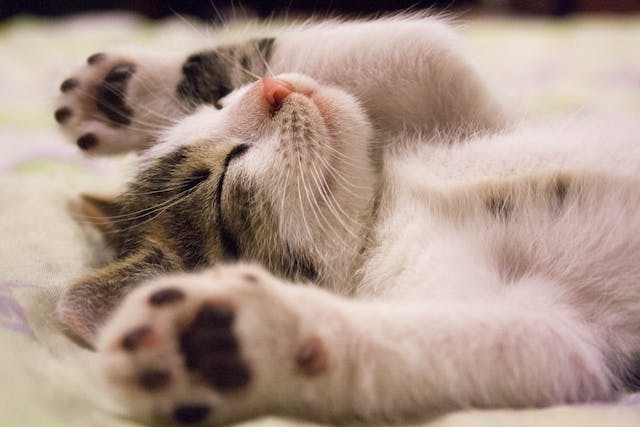Cat allergies are a common problem experienced by many people. They can be caused by a variety of allergens, which trigger an immune system response that leads to allergic reactions. In this article, we will explore four of the most common cat allergies and provide information on how to identify and manage them.
The first type of cat allergy is caused by cat dander. Dander is made up of tiny flakes of skin that are shed by cats and can be found in their fur, saliva, and urine. When a person with a dander allergy comes into contact with these particles, their immune system overreacts and produces symptoms such as sneezing, wheezing, and itchy eyes. In severe cases, it can lead to asthma attacks.
Another common cat allergy is caused by a protein found in cat saliva and urine called Fel d 1. This protein is produced by cats and can be found in their fur, as well as on surfaces that they have come into contact with. When a person with a Fel d 1 allergy is exposed to this protein, their immune system reacts by producing symptoms such as itching, hives, and swelling. In some cases, it can also cause respiratory problems.
Identifying Common Cat Allergies
Cats are known for their playful and affectionate nature, but unfortunately, they can also cause allergies in some people. Identifying the type of allergy is important for effective treatment. Here are four common cat allergies and their symptoms:
Food Allergies in Cats
Food allergies in cats are caused by an adverse reaction to a specific ingredient in their diet. Symptoms may include vomiting, diarrhea, and itchy skin. An elimination diet can help identify the allergen, and a change in diet can provide relief.
Environmental Allergens
Environmental allergens such as dust, pollen, and mold can cause respiratory symptoms in some people. Cats can carry these allergens on their fur and dander, leading to sneezing, coughing, and asthma. Regular cleaning and air filtration can help reduce exposure to these allergens.
Flea Allergies
Flea bites can cause an allergic reaction in some cats, leading to flea allergy dermatitis. Symptoms include itching, scratching, and skin irritation. Treatment may include flea prevention, medication, and soothing baths.
Contact Allergens
Contact allergens such as perfume and cleaning products can cause an allergic reaction in some people. Cats can also cause an allergic reaction through their saliva and dander. Symptoms may include itching and rash. Avoiding contact with the allergen and using antihistamines can provide relief.
In conclusion, identifying the type of cat allergy is crucial for effective treatment. Whether it's a food allergy, environmental allergen, flea allergy, or contact allergen, there are ways to manage and reduce symptoms. Consultation with a veterinarian or allergist can provide further guidance.
Treatment and Management of Cat Allergies
Medical Interventions
When it comes to treating cat allergies, medical interventions may be necessary in severe cases. Allergy testing can help identify the specific allergens causing the reaction. Once identified, immunotherapy, also known as allergy shots, can help desensitize the immune system to the allergen over time. In addition, medications such as antihistamines and corticosteroids can provide relief from symptoms such as itching and swelling.
Lifestyle and Home Remedies
In addition to medical interventions, there are several lifestyle and home remedies that can help manage cat allergies. Grooming and bathing your cat regularly can help reduce the amount of dander in the air. Using flea prevention methods can also help reduce the amount of allergens in the home. Vacuuming with a HEPA filter can help remove allergens from carpets and upholstery. Keeping the home well-ventilated and using an air purifier can also help reduce allergens in the air.
Dietary Adjustments
In some cases, food allergies can contribute to cat allergies. An elimination diet can help identify any food allergies your cat may have. Common allergens include chicken, beef, and fish. Once identified, removing the allergen from your cat's diet can help reduce the amount of allergens in the air and ultimately reduce your allergy symptoms.
Overall, managing cat allergies requires a combination of medical interventions, lifestyle and home remedies, and dietary adjustments. By taking a proactive approach, individuals with cat allergies can live comfortably with their feline companions.
How Often Do You Take a Cat to the Vet?
Regular visits to the vet are essential for cats' overall health and well-being. It is recommended that cats receive an annual wellness exam, regardless of their age or health status. However, some cats may require more frequent visits depending on their health needs.
Here are some common reasons why a cat may need to visit the vet more often:
1. Chronic Health Conditions
Cats with chronic health conditions such as diabetes, kidney disease, or hyperthyroidism require regular monitoring and treatment. The frequency of vet visits will depend on the severity of the condition and the cat's response to treatment.
2. Age
As cats age, they become more susceptible to health problems such as arthritis, dental disease, and cancer. Senior cats should have more frequent vet visits to detect and manage any health issues that may arise.
3. Vaccinations
Cats require vaccinations to protect them from several diseases such as rabies, feline leukemia, and distemper. The frequency of vaccinations will depend on the cat's age, lifestyle, and risk of exposure to these diseases.
4. Grooming and Dental Care
Cats require regular grooming and dental care to maintain their health and prevent problems such as hairballs and dental disease. Regular vet visits can help detect any grooming or dental issues and provide treatment.
Overall, it is important to follow your vet's recommendations for how often to bring your cat in for check-ups. Regular visits can help detect and prevent health problems and ensure that your cat lives a long and healthy life.


